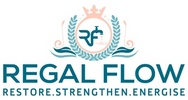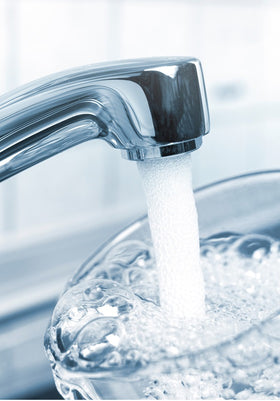
Can You Use a RO System with a Water Softener? Here’s Why You’ll Want To
Can you use a RO system with a water softener? Absolutely—and your appliances will thank you. Think of it as giving your water a spa day: softened first, then purified. Want to understand how water softeners work and how this duo improves taste, tackles limescale, and even pairs with reverse osmosis? Let’s dive in!
Understanding Water Softeners and RO Systems
What is a Water Softener?
If you’ve ever noticed white marks on your taps or a filmy residue in your kettle, chances are you’re dealing with hard water. This is where a water softener steps in. It’s a household system that swaps out those pesky minerals that cause limescale. For many homes in the UK, it’s become a must-have.
How Water Softeners Work (Ion Exchange)
Water softeners use a clever little trick called ion exchange. As your water passes through the softener’s resin tank, calcium and magnesium ions—those responsible for water hardness—are replaced with sodium or potassium ions. The result? Water that’s gentle on your skin and kinder to your plumbing.
Benefits of Water Softeners
-
Prevents limescale build-up in pipes and appliances
-
Makes soaps, shampoos, and detergents more effective
-
Leaves clothes feeling softer after washing
-
Can help your heating system run more efficiently
What is a Reverse Osmosis (RO) System?
Now, while soft water is brilliant for your home, it doesn’t always mean it’s pure. That’s where reverse osmosis systems come into play—especially when fitted to a kitchen tap or countertop dispenser.
How RO Systems Work (Membrane Filtration)
RO systems work by pushing water through a special membrane under pressure. This membrane acts like a super-fine filter, catching things like chlorine, lead, nitrates, and even bacteria. What you’re left with is water that’s clean, crisp, and ideal for drinking or cooking.
Benefits of RO Systems
-
Removes up to 99% of common contaminants
-
Improves water taste and clarity
-
Reduces the need for bottled water
-
Great for baby formula, coffee, and cooking
The Synergy: Using Both Systems Together
Can You Use Them Simultaneously? (The Short Answer is Yes)
Yes, you absolutely can. In fact, pairing a water softener with a RO system is one of the smartest moves for UK homes. One system softens, the other purifies. Together, they offer a powerful one-two punch for water quality.
Why Combine a Water Softener and an RO System?
Protecting the RO Membrane from Hard Water Scale
RO membranes are sensitive. Hard water minerals like calcium can clog and damage them over time. But if you soften the water first, you protect the RO membrane—and save on replacement costs.
Achieving Comprehensive Water Treatment (Softened and Purified Water)
Think of it this way: softened water protects your plumbing, while RO water protects your family. Together, they tackle limescale, metals, bacteria, and more. The result? Top-tier water from every tap that matters.
Extending the Lifespan of the RO System
Because the softener catches the heavy minerals first, your RO system doesn't have to work as hard. This means fewer filter changes, fewer breakdowns, and longer-lasting parts. It’s a win-win for your wallet.
Improving the Taste and Quality of Drinking Water
Some folks worry that softened water tastes a bit salty. The good news? An RO system removes any excess sodium. What you get is pure, fresh-tasting water—perfect for your morning cuppa or filling up that reusable bottle.
Installation and Maintenance Considerations
Recommended Installation Order (Softener before RO)
Order matters. You should always install the water softener before the RO system. That way, the RO unit only sees softened water, protecting its delicate membrane from scale damage.
Point-of-Entry vs. Point-of-Use
-
Point-of-Entry: The water softener is installed where water enters your home. It treats all your household water—for bathing, laundry, and cleaning.
-
Point-of-Use: The RO system is installed at a specific tap, usually in the kitchen, providing purified water just where you need it.
This setup gives you the best of both worlds.
Maintenance of Both Systems
Water Softener Maintenance (Salt Refills, Brine Tank Cleaning)
-
Check the salt level monthly and top it up when needed
-
Clean out the brine tank every 6–12 months
-
Watch for “salt bridging”—when a crust forms and stops proper flow
RO System Maintenance (Filter and Membrane Replacement)
-
Change the pre-filters every 6 to 12 months
-
Replace the membrane every 2 to 3 years, depending on use
-
Sanitise the system once a year to keep everything fresh and safe
Addressing Potential Concerns
Sodium Levels in Softened Water and RO's Role
Worried about sodium in softened water? The RO system has your back. It removes most of that extra sodium, giving you low-sodium drinking water that’s suitable for most diets.
Wastewater from RO Systems
It’s true—RO systems do produce some wastewater. But newer models are far more efficient than older ones. And given the quality of water you get, most homeowners consider it a worthwhile trade-off.
Conclusion: The Benefits of a Combined Approach
Teaming up a water softener with a reverse osmosis system gives you the ultimate in water treatment. It’s like giving your water a full makeover—soft, clean, and delicious. With fewer limescale issues, longer appliance life, and better-tasting water, this combo is hard to beat. It might be an investment upfront, but your future self (and your plumbing) will thank you.
More Water Softener info our customers have found helpful
- How a Water Softener Works
- The Science Behind Water Softener Ion Exchange
- The Difference Between a Water Softener or Whole House Filtration
- Water Softener vs Reverse Osmosis: How to Choose the Right System
- Water Softener vs Water Conditioner: Pros, Cons, and Which One You Need
- Electric vs Non-Electric Water Softeners
- Water Softener vs Water Filter
- Common Myths About Water Softeners Debunked: The Truth You Need to Know
- Are Magnetic Water Softeners any Good?
- Can Water Be Too Soft from a Water Softener?
- Can You Use Softened Water in a Central Heating System?
- Can I Use a Water Softener with a Combi Boiler?



Leave a comment